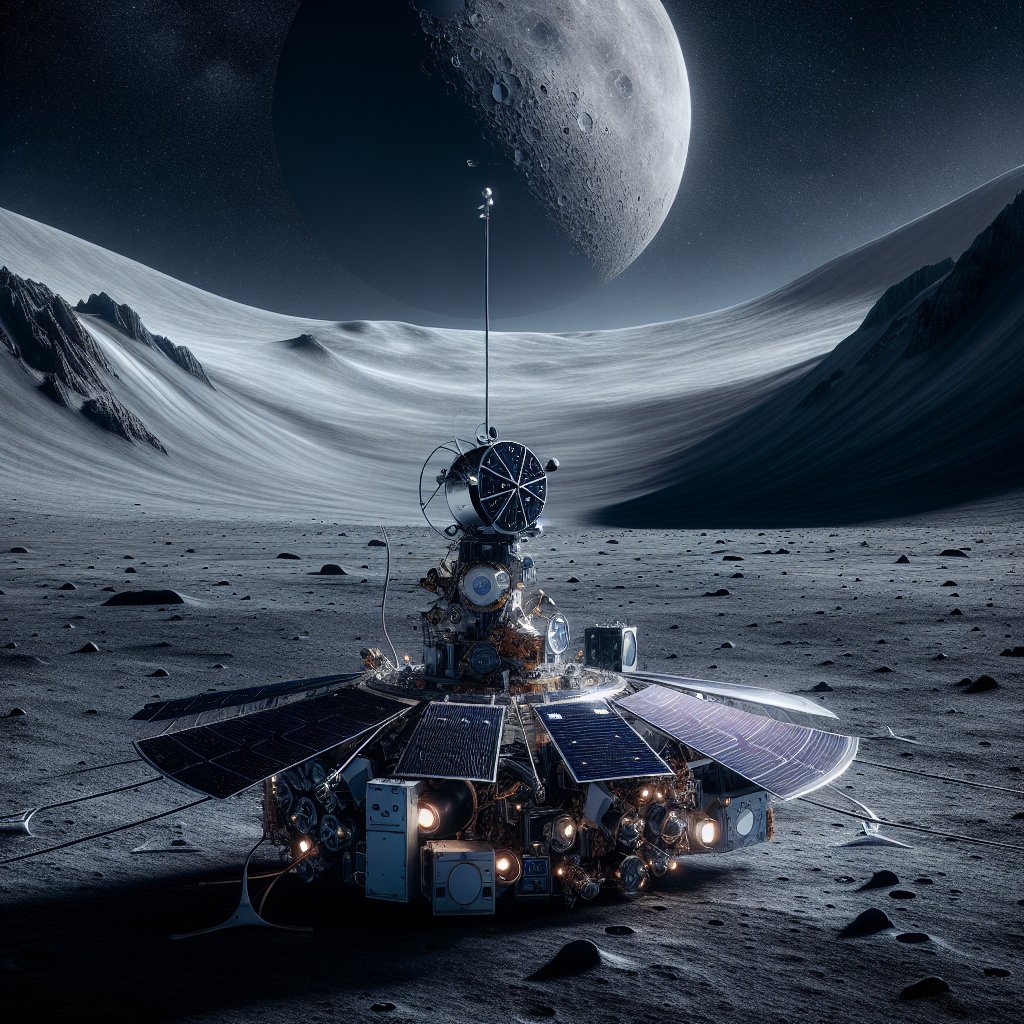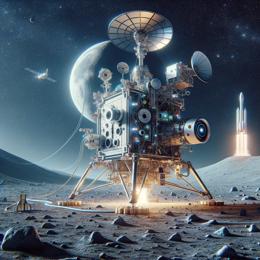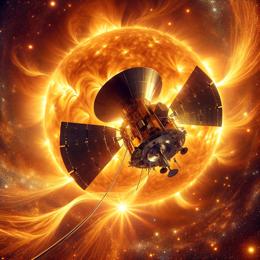Image created by AI
Historic Lunar Landing: Intuitive Machines' Odysseus Makes First US Moon Touchdown in 50 Years
In an extraordinary leap for commercial space exploration, the U.S. celebrated its first moon landing in over half a century as a privately built and operated spacecraft, Odysseus, developed by Texas-based company Intuitive Machines, touched down near the moon's elusive south pole. This groundbreaking event not only represents a significant milestone for NASA in the Artemis era but also showcases the growing capabilities of private sector involvement in the space industry.
Odysseus successfully completed its lunar landing on Thursday evening at approximately 6:23 pm. EST, following a tense final approach that saw last-minute navigational challenges and a nerve-wracking period of radio silence. The triumphant confirmation of a successful landing came when faint signals eventually reached mission control - the lander had survived its descent to the moon's surface, approximately 384,000 km from Earth.
Despite the joyous accomplishment, mission control faced initial uncertainties regarding the precise condition and orientation of Odysseus due to initial communications problems post-landing. Mission director Tim Crain's announcement to the operations center carried a cautious optimism, acknowledging the presence of their equipment on the moon's surface while hinting at further data analysis to understand the lander's situation fully.
Following the landing, the company took to social media, confirming that Odysseus was upright and beginning to transmit data. NASA's former science chief Thomas Zurbuchen speculated that the lander's antenna might have been obstructed by lunar geography, potentially impacting the mission's scientific goals to deploy payloads and conduct research.
The landing site, near the Malapert A crater at the moon's south pole, was selected for its scientific potential, particularly concerning space weather interactions and radio astronomy - insights that are crucial for future missions. Odysseus, devoid of live video capabilities, ended its one-week journey to the moon which began with a launch from Florida aboard a SpaceX Falcon 9 rocket.
This milestone marks the United States' first controlled lunar descent since the Apollo 17 mission in 1972 and positions the country ahead in the ongoing lunar exploration race – with only the former Soviet Union, China, India, and recently Japan, having achieved moon landings to date.
The significance of Odysseus's mission lies in its cargo: a suite of scientific instruments and technology demonstrations for NASA and commercial clients, designed to operate on solar energy for an expected seven days. NASA's payload focuses on understanding the lunar environment to aid future landing missions.
This momentous landing under NASA's Artemis programme points to a fierce race to secure a human presence on the moon before China's planned crewed missions. Odysseus also represents a landmark achievement under NASA's Commercial Lunar Payload Services (CLPS) program, emphasizing the benefits and risks associated with relying on the burgeoning private space sector for future lunar exploration.
The celebratory tone, however, is not without its caveats. Just last month, a spacecraft from Astrobotic Technology encountered a propulsion system leak en route to the moon, highlighting the inherent risks of space travel and the challenges such missions face.
While the lunar surface has just been grazed by another human-made object, the journey of Odysseus is far from over. The mission's outcomes will influence the direction of future space travel and have the potential to reshape our understanding of the lunar environment, setting the stage for a future where space is not just a destination for superpowers or state-run programs, but also for the private sector's ingenuity.










